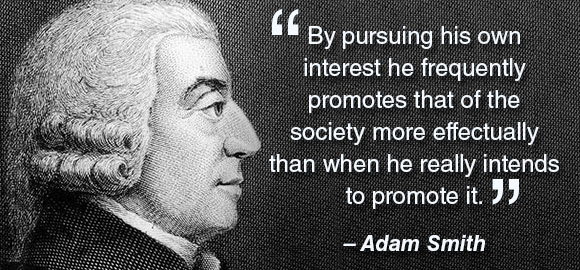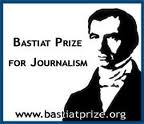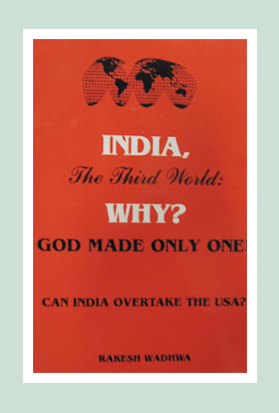David Ricardo: Following the Footprints of Adam Smith
In many ways, Ricardo’s economic views mirror that of Adam Smith’s teachings. He believed that the market, although in many ways imperfect, was better left “untouched” by restrictions. According to Ricardo, government intervention only prevents the economy from growing and also correcting itself, thereby leading to discrepancies in the framework. He believed that for a free market economy to thrive and for economic stagnation to be avoided, the economy should be free to play out. Although Ricardo’s pursuit as a political economist was short, spanning merely 14 years, he contributed to striking down the Corn Laws, etching his name in history.

Early Life
Born in 1772 in London, David Ricardo was one among 17 children. Hailing from a family of Sephardic Jews, his father was a successful stockbroker. Ricardo’s career in commerce began when he started working along with his father at the age of 14. However, when he was 21, a family rift was created by his decision to marry a Quaker. By that time, Ricardo was successful with stocks, and he had no financial woes. This also meant that he could focus on intellectual pursuits; his main area of interest being political economics. He was deeply influenced by the Wealth of Nations, written by Adam Smith in 1799. His other interests were in the fields of mineralogy, chemistry, mathematics and geology.
First Works
Ricardo’s first major work in political economics was published in 1810, The High Price of Bullion, a Proof of the Depreciation of Bank Notes. This brought him considerable recognition, making him a name the government economic advisors sought. His theory said that since too many banknotes were being created, there was high inflation in England. The success of his paper also helped place him among other contemporaries of his time, such as Thomas Robert Malthus and James Mill.
Standing as an Economist
After his first paper, Ricardo gained James Mill as his mentor, who coached and inspired him to contribute more to the field of economics. In 1814, Ricardo announced his retirement from business life to pursue his mission as a political economist. In 1815, he published another major work, Essay on the Influence of a Low Price of Corn on the Profits of Stock. Here he laid the idea of neoclassical economics – Law of diminishing returns and its correlation to capital, labour and the economy as a whole.
Fight to Abolish the Corn Laws
The issue in his essay was based on a British legislation that was causing considerable commotion in the economy – The coming into force of the Corn Laws after the period of the Napoleonic Wars. This law forbade the country to import food supplies, which in turn caused high inflation in the prices of British agricultural produce. Since crop prices skyrocketed, land rents also surged. As a land owner, Ricardo stood to benefit from this. Nonetheless, he argued that the Corn Laws should be stuck down, as they led to an economy that was against the principles of perfectly free commerce, adding a burden to both agriculture and trade. Trade restrictions cause the price of goods to be artificially high, much higher than what they ought to be.
Free Market Ideals
Ricardo urged that a country must devote its labour and capital in a way that it is most effective to the economy. Controlled by regulation, the pursuit of universal good by stimulating the economy as a whole is lost – This ideal is basically the foundation of a free market economy.
In the Corn Laws issue, Ricardo’s policy recommendations were based on the doctrine of free trade. So, he actively participated in the Parliamentary campaign against the Corn Laws along with several other government interventions.
After his time, Ricardo’s ideas greatly influenced the developments in the field of economics. American economists place him as the second most influential economist (in the period prior to the twentieth century), after Adam Smith.
 Rakesh Wadhwa. Ever since, I was a school boy, I knew India was on the wrong path. Socialism was just not what we needed to get ahead. Government controlled our travel; government controlled our ability to buy and sell; and government controlled our freedom to move our money. My life has focused on the inherent rights people have. When I was in college, I never understood, what the governments meant by their "socialistic attitude". If people are free to buy, sell and move their capital themselves without any restrictions by state, then the welfare of people is inevitable & hence the countries they live in will become wealthy. The government has no right whatsoever, to point a finger at me or my business. I am not a revolutionary. I just want to light up my cigarette and not get nagged about it. I believe in non-interfering attitude to attain more.
Rakesh Wadhwa. Ever since, I was a school boy, I knew India was on the wrong path. Socialism was just not what we needed to get ahead. Government controlled our travel; government controlled our ability to buy and sell; and government controlled our freedom to move our money. My life has focused on the inherent rights people have. When I was in college, I never understood, what the governments meant by their "socialistic attitude". If people are free to buy, sell and move their capital themselves without any restrictions by state, then the welfare of people is inevitable & hence the countries they live in will become wealthy. The government has no right whatsoever, to point a finger at me or my business. I am not a revolutionary. I just want to light up my cigarette and not get nagged about it. I believe in non-interfering attitude to attain more. 
 The Bastiat Award is a journalism award, given annually by the International Policy Network, London. Bastiat Prize entries are judged on intellectual content, the persuasiveness of the language used and the type of publication in which they appear. Rakesh Wadhwa won the 3rd prize (a cash award of $1,000 and a candlestick), in 2006.
The Bastiat Award is a journalism award, given annually by the International Policy Network, London. Bastiat Prize entries are judged on intellectual content, the persuasiveness of the language used and the type of publication in which they appear. Rakesh Wadhwa won the 3rd prize (a cash award of $1,000 and a candlestick), in 2006.
What the readers are saying…